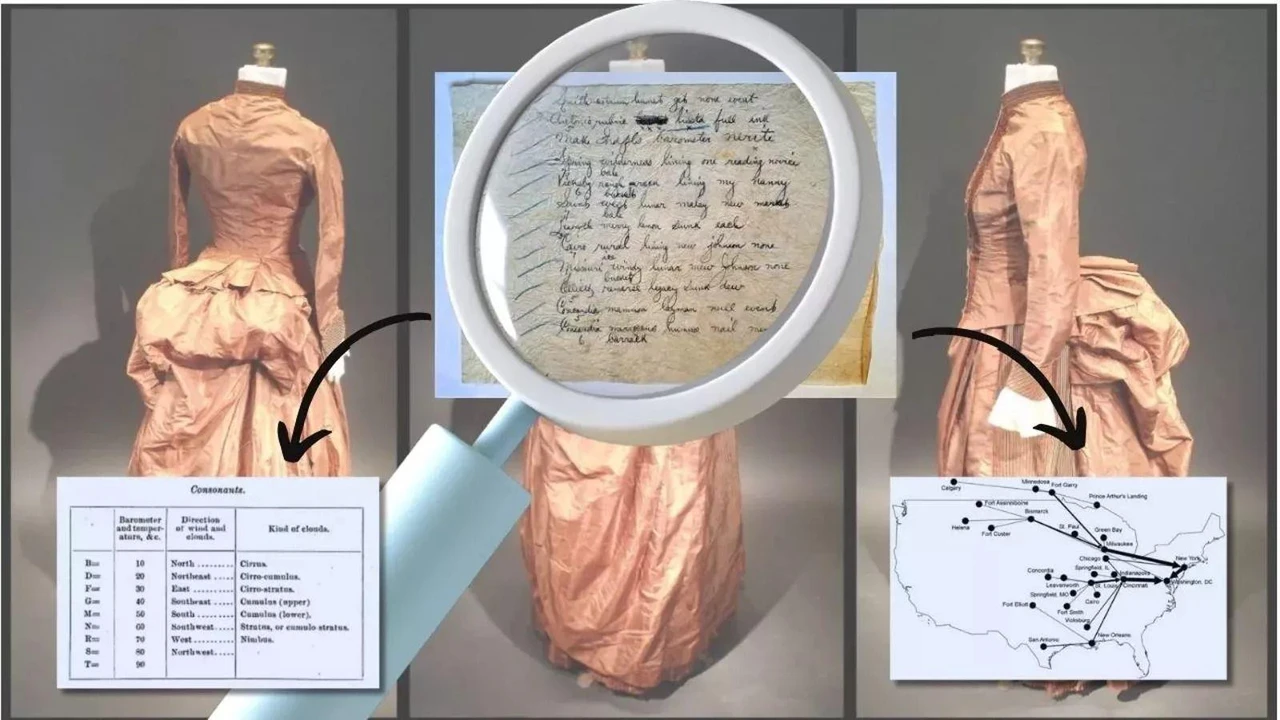Mysterious code found in 130-year-old dress finally deciphered after 11 years

The Silk Dress Cryptogram, a 130-year-old cryptic code hidden in a vintage woman’s dress, is decoded by Wayne Chan
Cryptic codes hidden in a nostalgic woman’s dress purchased from an antique shop in 2013 have been decoded after lingering as one of the world’s top 50 unbreakable codes for 11 years. The code, known as the “Silk Dress Cryptogram,” was successfully cracked by Wayne Chan, a data analyst at the University of Manitoba in Canada, who meticulously followed the clues he had gathered.
Located in the state of Maine, USA, the “Silk Dress Cryptogram,” regarded as one of the world’s most challenging 50 codes, has finally been unraveled. The dress held a secret code that had baffled data analysts, codebreakers, and conspiracy theorists for over a decade. Wayne Chan, the data analyst from the University of Manitoba, succeeded in breaking the code by following the clues he had captured.
The words on the 1880s dress became a telegraph cipher, but their meaning remained a mystery for years. Chan, noting parallels with meteorological information, delved into extensive research. By connecting the sources he reached, Chan deciphered the code and published his findings in the Cryptologia journal.
A 130-Year-Old Tale Unveiled
A nostalgic woman’s dress, acquired from an antique store, concealed a hidden code that surprised everyone. For years, numerous conspiracy theories circulated the code. The code became one of the world’s top 50 unbreakable codes.
Over a decade, code breakers attempted to decipher the code found in the stitches of a silk dress dating back to the 1880s, with a crumpled paper hidden in a secret pocket. They failed in their endeavors. The code, over time, gained its own name: Silk Dress Cryptogram.
Spy Talk or Gambling Bets?
The story dates back to the 1880s when the owner of the dress embedded a message in a hidden pocket. The paper either got forgotten or the function could not be fulfilled before the dress changed hands. The dress was purchased by someone named Sara Rivers Cofield in 2013 from an antique dealer in the state of Maine, USA.
Rivers Cofield not only discovered the text remaining in the secret pocket but also published a blog post suggesting it was a code. She threw a stone into the internet well, stating, “If there’s a codebreaker genius out there looking for a project, I’m putting this out there.” For years, the code remained unbroken. The sentences on the paper included:
“Bismark omit leafage buck bank,”
“Calgary Cuba unguard confute duck,”
“Spring wilderness lining one reading novice.”
The meaning of these expressions remained a puzzle. Were they illegal gambling codes? Information about the dress? Or perhaps spy talk?
Among the World’s Top 50 Codes
After baseless guesses and empty interpretations, the matter reached experienced code breakers. There was a consensus that the note was a kind of telegraph code, as telegraph companies charged per word, leading to the use of abbreviated codes for sending messages with limited words. However, what the abbreviations represented remained a mystery.
The Silk Dress Cryptogram became one of the world’s top 50 unbreakable codes.
Wayne Chan, a data analyst from the University of Manitoba, decided to crack the code like many others. Initially, he scanned a codebook consisting of 170 telegrams but found no similarities or clues.
Cracking the Code
Finally, he found a book titled “Telegraph Stories and Telegraph History,” which contained codes used by the U.S. Army Signal Corps – a group serving as the national air service in the late 1800s. There was a parallel between the code on the dress and the code words used for sending weather observations in the book. With this clue, Chan collaborated with the central library in Maryland, where he found unpublished codebooks related to weather telegraphs. One of these books, published in 1892, proved crucial in affirming his progress. Combining his sources, Chan cracked the code and published his findings in the Cryptologia journal.
Deciphered After 11 Years
Every line of this crumpled paper contained weather observations and the time of day at a specific location. This information was transmitted via telegraph to Washington’s central signal service office. Breaking the code was challenging because it was exclusively used by government officials to create weather maps.
The code system adopted in 1887 allowed for a six-word report for a location. Going deeper into his research, Chan determined the exact date of the decoded code as May 27, 1888.
Despite the code being deciphered, there are still unanswered questions about its owner. Sara Rivers Cofield found the word “Bennett” on a label in the dress. However, Wayne Chan, the codebreaker, couldn’t associate this name with any woman working in relevant departments in Washington during that time. Who was Bennett remains a lingering question even after the code’s decryption.



